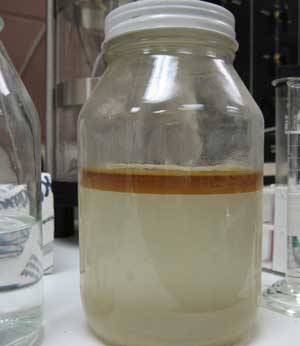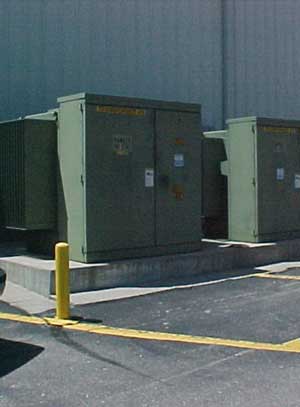Items to Consider in SPCC and FRP Plans



July 20, 2007
BY Brian Wanzenried
The U.S. EPA has spent decades developing and enforcing regulations intended to protect human health and the environment. The regulations affecting the ethanol industry continue to evolve, largely due to the industry's relative youth. While fuel ethanol facilities produce what is generally considered an environmentally friendly fuel, there is inherent risk of spillage in any industrial-scale processing facility. Therefore, the EPA continues to update the regulations affecting ethanol and similar industries.
The EPA recently amended the Spill Prevention Control and Countermeasure (SPCC) regulation so that all subjected facilities must have an updated SPCC plan by Oct. 31, 2007, although at press time the agency proposed extending SPCC compliance dates to July 1, 2009. While updating, preparing, reviewing and implementing SPCC and Facility Response Plans (FRP), it's easy to overlook materials and items subject to these regulations.
The SPCC regulation requires the development of a SPCC plan that is reviewed and certified by a licensed professional engineer. Soliciting the assistance of professional engineering consultants during the development of a plant's SPCC plan can help ethanol facility owners and managers prevent mistakes and avoid roadblocks to meeting EPA standards while avoiding fines and costly changes.
The EPA promulgated the SPCC regulation in 1974 and designed it to prevent releases of oils to navigable waterways. The SPCC regulation requires certain preventive measures such as secondary containment around storage tanks, and the development and implementation of an SPCC plan describing the preventive measures. The SPCC regulation applies to non-transportation facilities with certain quantities of on-site oils (e.g., 1,320 gallons of aboveground aggregate capacity) and a reasonable expectation of having a spill impact a navigable waterway.
The EPA promulgated the FRP regulation in 1991 and designed it to provide improved responses to oil spills in navigable waterways. Several other federal agencies have similar regulations with different applicability criteria. The EPA's version applies to non-transportation facilities with certain quantities of oils on-site (e.g., greater than 1 million gallons, or over 42,000 gallons if the facility transfers oil over water) and a risk of causing substantial harm to the environment.
Materials Considered as Oils
The purpose of the SPCC and FRP regulations is to prevent and mitigate oil spills in navigable waterways. According to Section 112.2 of Title 40 of the Code of Federal Regulations, "Oil means oil of any kind or in any form... ." Although the EPA hasn't provided a more specific technical interpretation or definition of "oils" subject to these regulations, it's identified specific materials (e.g., in the Federal Register preambles to the various SPCC and FRP regulations) that are "oils" including:
› Animal fats and oils
› Crude oil
› Diesel fuel
› Fuel oil
› Leaded and unleaded gasoline
› Hydraulic oils
› Jet fuel
› Kerosene
› Lubricating oils
› Nut oils
› Vegetable oils
The EPA recently interpreted that ethanol denatured with gasoline is an oil under the Clean Water Act. The interpretation was explained in a Nov. 6, 2006, letter from EPA Assistant Administrator Susan Parker Bodine to Renewable Fuels Association President Bob Dinneen. Based on this interpretation, an ethanol plant must include the denatured ethanol in its SPCC plan, and provide control and containment measures for the denatured ethanol. Additionally, the ethanol plant may be subject to the FRP requirements depending on the facility's total oil storage capacity.
The SPCC applicability may also apply if the ethanol is denatured with kerosene and pyronate. However, straight ethanol and ethanol denatured with methyl isobutyl ketone, nitropropane, methyl n-butyl ketone, acetaldol and heptane are unlikely to be considered oils since these denaturants are hazardous substances and not oils.
Items Covered Under the SPCC Regulation
As a good rule of thumb, any equipment containing "oil" is covered by the SPCC regulation. This includes, but is not limited to:
› Storage tanks
› Portable containers (e.g., drums and tote tanks)
› Mixers
› Pipes
› Oil-filled electrical equipment
› Oil-filled operating equipment
› Tanker trucks, and
› Railcars.
An exception to this rule includes items, such as barrels, with a capacity less than 55 gallons. However, it's important to emphasize that this exception is for capacity and not the actual volume of oil in the item.
Oil-filled operating and electrical equipment is often overlooked by facilities preparing and implementing SPCC plans. Oil-filled operating equipment includes hydraulic and lubricating oil reservoirs, and vessels, that are processing oils. such as a mixing tank. Oil-filled electrical equipment includes transformers, breakers and reclosers that have insulating oils, but doesn't include dry transformers and transformers with sulfur hexafluoride.
An interpretation communicated by the EPA indicates that if the ethanol plant doesn't own on-site, oil-filled electrical equipment, then the facility's oil storage capacity doesn't need to include that equipment. Therefore, the SPCC plan doesn't have to address that equipment. However, it's recommended that the SPCC plan identifies the oil-filled electrical equipment on the plant site diagrams with a note explaining the equipment isn't owned by the ethanol plant.
The SPCC plan should also include tank trucks and railcars loaded or unloaded on-site. This is based on information provided in an undated letter from Stephen F. Heare, acting deputy director for the Office of Emergency and Remedial Response of the EPA, to Melissa Young, of the Government Affairs Council of the Petroleum Marketers Association of America. Additionally, when determining oil storage capacity for the FRP regulation, the facility should estimate the maximum number of tank trucks and railcars on-site and include this volume when determining the facility's storage capacity. Tank trucks and railcars incidentally on-site (i.e., not loaded or unloaded on-site) don't need to be counted towards the facility's capacity. They're considered transportation-related and aren't subject to the EPA's jurisdiction. A tank truck or railcar may be incidentally on-site if it's parked on-site overnight or brought on-site by the rail line as long as the tank truck or railcar is not loaded or unloaded while on-site.
For example, a facility held several oil bulk storage tanks with a total storage capacity near but less than 1 million gallons. The facility also had a number of railcars loaded on-site. The EPA inspected the facility and determined it had more than 1 million gallons of capacity since the railcars are included in the calculation of the storage capacity. Due to the proximity of the facility to sensitive resources, and the facility's oil storage capacity of over 1 million gallons, the facility was required to prepare an FRP.
Utilizing the resources of a professional engineer or regulatory consultant will help prevent inadvertent oversights and help remote owners and on-site managers understand the regulatory details and, ultimately, contribute to a profitable return.
Brian Wanzenried is a project engineer in Terracon's Omaha, Neb., office. He has 16 years of experience in chemical and environmental engineering including regulatory compliance work, training, site assessments and cleanup. He has written and updated SPCC Plans and FRPs for hundreds of facilities including ethanol plants, chemical manufacturing, agricultural, mining and vehicle maintenance facilities, and power plants and electrical substations. Reach Wanzenried at (800) 593-7777.
The claims and statements made in this article belong exclusively to the author(s) and do not necessarily reflect the views of Ethanol Producer Magazine or its advertisers. All questions pertaining to this article should be directed to the author(s).
The EPA recently amended the Spill Prevention Control and Countermeasure (SPCC) regulation so that all subjected facilities must have an updated SPCC plan by Oct. 31, 2007, although at press time the agency proposed extending SPCC compliance dates to July 1, 2009. While updating, preparing, reviewing and implementing SPCC and Facility Response Plans (FRP), it's easy to overlook materials and items subject to these regulations.
The SPCC regulation requires the development of a SPCC plan that is reviewed and certified by a licensed professional engineer. Soliciting the assistance of professional engineering consultants during the development of a plant's SPCC plan can help ethanol facility owners and managers prevent mistakes and avoid roadblocks to meeting EPA standards while avoiding fines and costly changes.
The EPA promulgated the SPCC regulation in 1974 and designed it to prevent releases of oils to navigable waterways. The SPCC regulation requires certain preventive measures such as secondary containment around storage tanks, and the development and implementation of an SPCC plan describing the preventive measures. The SPCC regulation applies to non-transportation facilities with certain quantities of on-site oils (e.g., 1,320 gallons of aboveground aggregate capacity) and a reasonable expectation of having a spill impact a navigable waterway.
The EPA promulgated the FRP regulation in 1991 and designed it to provide improved responses to oil spills in navigable waterways. Several other federal agencies have similar regulations with different applicability criteria. The EPA's version applies to non-transportation facilities with certain quantities of oils on-site (e.g., greater than 1 million gallons, or over 42,000 gallons if the facility transfers oil over water) and a risk of causing substantial harm to the environment.
Materials Considered as Oils
The purpose of the SPCC and FRP regulations is to prevent and mitigate oil spills in navigable waterways. According to Section 112.2 of Title 40 of the Code of Federal Regulations, "Oil means oil of any kind or in any form... ." Although the EPA hasn't provided a more specific technical interpretation or definition of "oils" subject to these regulations, it's identified specific materials (e.g., in the Federal Register preambles to the various SPCC and FRP regulations) that are "oils" including:
› Animal fats and oils
› Crude oil
› Diesel fuel
› Fuel oil
› Leaded and unleaded gasoline
› Hydraulic oils
› Jet fuel
› Kerosene
› Lubricating oils
› Nut oils
› Vegetable oils
The EPA recently interpreted that ethanol denatured with gasoline is an oil under the Clean Water Act. The interpretation was explained in a Nov. 6, 2006, letter from EPA Assistant Administrator Susan Parker Bodine to Renewable Fuels Association President Bob Dinneen. Based on this interpretation, an ethanol plant must include the denatured ethanol in its SPCC plan, and provide control and containment measures for the denatured ethanol. Additionally, the ethanol plant may be subject to the FRP requirements depending on the facility's total oil storage capacity.
The SPCC applicability may also apply if the ethanol is denatured with kerosene and pyronate. However, straight ethanol and ethanol denatured with methyl isobutyl ketone, nitropropane, methyl n-butyl ketone, acetaldol and heptane are unlikely to be considered oils since these denaturants are hazardous substances and not oils.
Items Covered Under the SPCC Regulation
As a good rule of thumb, any equipment containing "oil" is covered by the SPCC regulation. This includes, but is not limited to:
› Storage tanks
› Portable containers (e.g., drums and tote tanks)
› Mixers
› Pipes
› Oil-filled electrical equipment
› Oil-filled operating equipment
› Tanker trucks, and
› Railcars.
An exception to this rule includes items, such as barrels, with a capacity less than 55 gallons. However, it's important to emphasize that this exception is for capacity and not the actual volume of oil in the item.
Oil-filled operating and electrical equipment is often overlooked by facilities preparing and implementing SPCC plans. Oil-filled operating equipment includes hydraulic and lubricating oil reservoirs, and vessels, that are processing oils. such as a mixing tank. Oil-filled electrical equipment includes transformers, breakers and reclosers that have insulating oils, but doesn't include dry transformers and transformers with sulfur hexafluoride.
An interpretation communicated by the EPA indicates that if the ethanol plant doesn't own on-site, oil-filled electrical equipment, then the facility's oil storage capacity doesn't need to include that equipment. Therefore, the SPCC plan doesn't have to address that equipment. However, it's recommended that the SPCC plan identifies the oil-filled electrical equipment on the plant site diagrams with a note explaining the equipment isn't owned by the ethanol plant.
The SPCC plan should also include tank trucks and railcars loaded or unloaded on-site. This is based on information provided in an undated letter from Stephen F. Heare, acting deputy director for the Office of Emergency and Remedial Response of the EPA, to Melissa Young, of the Government Affairs Council of the Petroleum Marketers Association of America. Additionally, when determining oil storage capacity for the FRP regulation, the facility should estimate the maximum number of tank trucks and railcars on-site and include this volume when determining the facility's storage capacity. Tank trucks and railcars incidentally on-site (i.e., not loaded or unloaded on-site) don't need to be counted towards the facility's capacity. They're considered transportation-related and aren't subject to the EPA's jurisdiction. A tank truck or railcar may be incidentally on-site if it's parked on-site overnight or brought on-site by the rail line as long as the tank truck or railcar is not loaded or unloaded while on-site.
For example, a facility held several oil bulk storage tanks with a total storage capacity near but less than 1 million gallons. The facility also had a number of railcars loaded on-site. The EPA inspected the facility and determined it had more than 1 million gallons of capacity since the railcars are included in the calculation of the storage capacity. Due to the proximity of the facility to sensitive resources, and the facility's oil storage capacity of over 1 million gallons, the facility was required to prepare an FRP.
Utilizing the resources of a professional engineer or regulatory consultant will help prevent inadvertent oversights and help remote owners and on-site managers understand the regulatory details and, ultimately, contribute to a profitable return.
Brian Wanzenried is a project engineer in Terracon's Omaha, Neb., office. He has 16 years of experience in chemical and environmental engineering including regulatory compliance work, training, site assessments and cleanup. He has written and updated SPCC Plans and FRPs for hundreds of facilities including ethanol plants, chemical manufacturing, agricultural, mining and vehicle maintenance facilities, and power plants and electrical substations. Reach Wanzenried at (800) 593-7777.
The claims and statements made in this article belong exclusively to the author(s) and do not necessarily reflect the views of Ethanol Producer Magazine or its advertisers. All questions pertaining to this article should be directed to the author(s).
Advertisement
Advertisement
Advertisement
Advertisement
Upcoming Events





